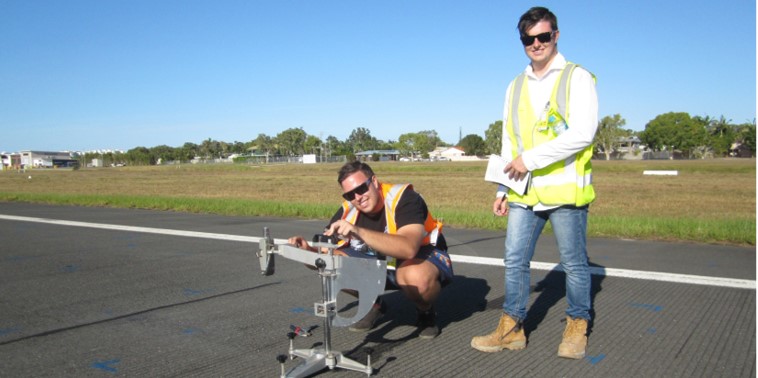Changing the future of airfield runways
Airfield pavements are not like ordinary roads, driveways or car parks. With some aircrafts weighing tens of thousands of kilograms, and airports facilitating millions of flights every year, airfield pavements are a crucial part of any airport’s infrastructure.
Runways, taxiways, apron and parking areas demand high maintenance to ensure the safe operation of the airport, and resurfacing is a costly procedure.
The Australian Airport Association (AAA) supported Airport Pavement Research Program (APRP) at the University of the Sunshine Coast is working to address the long-term lack of research and development in Australian airport pavement technology and practice upkeep.
Dr Greg White is the director of the program and believes the research will, quite literally, change the landscape of pavements for the future and save airports millions of dollars in the process.
“We have about three decades of catching up to do and my goal is to close that gap, and set the trends for the future, all aimed at providing benefit to the owners of airport pavements with regard to optimising whole-life cost and reducing risk of under-performance,” White said.
So far, the program has produced some significant results, particularly with its introduction of the ‘Performance-Based Airport Asphalt Specification’, recently published by the Australian Asphalt Pavement Association (AAPA).
“The specification is the first return to a nationally consistent specification for airport asphalt surfacing since the 1990s.
“It re-focusses the design of airport asphalt from a traditional recipe to compliance with performance-indicating laboratory test methods.”
White’s enthusiasm and passion for pavement research was ignited when he was a student.
White attended an inspection of RAAF Base Wiliamtown’s runway, taxiway and apron – and it was there he met the highly accomplished Bruce Rodway.
“From that day I was hooked and immediately enrolled in a masters by research at Newcastle University, focussed on airport pavements. I was never interested in anything else after that.”
Over the years, Greg gained a number of master level degrees, as well as a PhD, all earned in the area of pavement materials and engineering.
The idea of the Airport Pavement Research Program came about three years ago.
“I was presenting a part of my PhD research and (Sunshine Coast Airport General Manager) Peter Pallot said something like, ‘it would be great if we could have someone looking at pavement research for airports on an ongoing basis’,” White said.
“That spawned an idea which was publicly floated at the AAA Pavement & Lighting Forum in 2016 and things progressed from there.”
The APRP began in 2017 and will initially extend over five years. White says there is much more research to be completed and we can expect further valuable results.
“The big benefit on its way is Stone Mastic Asphalt (SMA) for ungrooved runway surfacing, which avoids grooving, provides a more stress resistant surface and negates the risk of groove closure,” White added.
In May, White will be presenting research and results at the AAA’s Pavement Technology Workshop. This will be the first chance for the industry to gather and discuss the latest findings.
“We now have research outcomes and publications and I look forward to seeing how the attendees respond to the research-based program,” he said.
The workshop takes place in Brisbane on 22 May. Program highlights include runway surface preservation treatment, development of the performance-based asphalt specification, falling weight deflectometer surveys for airport pavements and future research needs and current projects.
To find out more about the Pavement Technology Workshop click here.
To find out more about the USC Airport Pavement Research Program click here.
Photo above: Students from the Airport Pavement Research Program (APRP).





